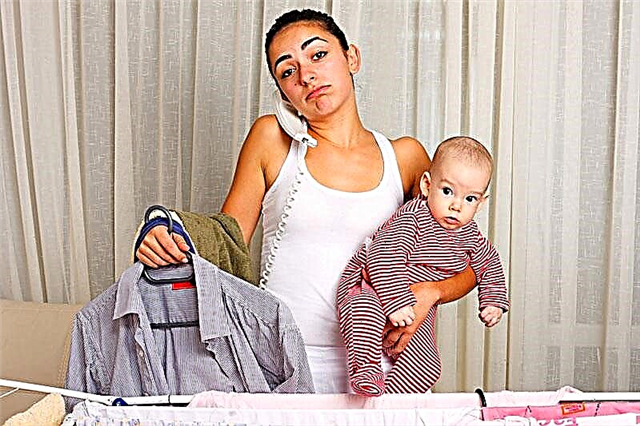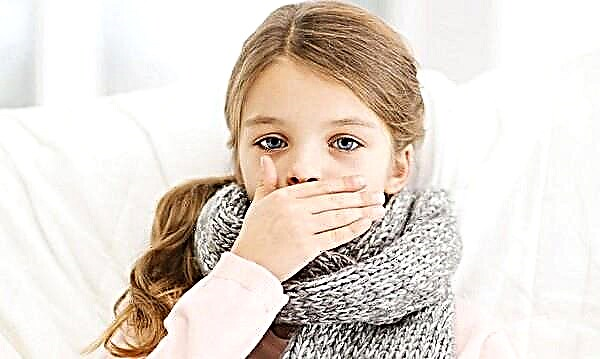
The first signs of chickenpox are of particular interest to parents whose children talked to a child who was diagnosed with chickenpox. Such information is also important in a situation where chickenpox is quarantined in a kindergarten or school. How to recognize this infection at an early stage and how to understand that a child has chickenpox? To answer such questions, you need to find out where and with what chickenpox begins in childhood.

What is chickenpox
Chicken pox, which is traditionally called chickenpox by parents and doctors, is a highly contagious infection with fever, rash and other symptoms. Most often, this disease is diagnosed in children aged two to ten years. Its causative agent is one of the types of herpes viruses - the Varicella Zoster virus.
Infants can also get infected and get sick with chickenpox, but most babies under six months old are protected from chickenpox by their mother's immunity. They receive antibodies to chickenpox from a mother who had been ill in childhood, first in utero, and then through breast milk. A child older than 6 months is no longer under the protection of maternal antibodies, so chickenpox in infants who are already six months old is quite possible.
Watch the episode of the program "Living Healthy!", In which the presenter Elena Malysheva talks about chickenpox in children:
Chickenpox is also sick at the age of 10-12 years. At the same time, in adolescents and adults, the infection is more severe, so many parents do not mind communicating with preschoolers with chickenpox children or go to a medical facility for a vaccination against such a disease.
In the body of a child who has had chickenpox or vaccinated against the Varicella Zoster virus, antibodies are formed that provide him with lifelong immunity from such an infection until the end of his life. Re-infection is possible only in 3% of cases, which is often associated with immunodeficiency.

Incubation period
This period is called the time from the entry of the virus into the child's body after infection to the first symptoms of infection. If you answer the question "how many days after contact does chickenpox appear?", Then most often in children it will be 14 days. The duration of the incubation period can be less (from 7 days) or more (up to 21 days), but on average, the onset of chickenpox is noted two weeks after the first contact with the virus.
The child becomes a source of transmission of the virus to other people at the end of the incubation period - about 24 hours before the first symptoms. In addition, it is possible to get infected from a child with chickenpox during the entire period of the rash and within five days after the last bubbles appear on the baby's skin. The pathogen is transmitted by airborne droplets.

Prodromal period
This is the name of the time period when it is difficult to say what kind of disease the child has. With chickenpox, it is quite short (lasts one or two days), and in many children it may be absent altogether. In the prodromal period of chickenpox, mothers note such manifestations of malaise in children as weakness, sore throat, headache, muscle aches, impaired appetite and sleep.
Watch a video that clearly demonstrates rashes at the initial stage of chickenpox in children:
Rash period
The rash begins to appear on the first or second day of the clinical symptoms of chickenpox. It is associated with the entry of the virus into the surface layer of the skin through the bloodstream. At the same time, the child's body temperature rises, and the severity of the fever is directly related to the abundance of elements of the rash, and when new rashes appear, the temperature rises again.
Where does the rash appear?
Not knowing whether the child has contracted chickenpox, all mothers are concerned about the question "on what part of the body does the rash begin to appear?" The first elements of the rash in most children appear on the trunk, then they spread to the skin of the limbs, and also appear on the head (first on the face, and then on the scalp). In some children, the rash also covers the mucous membranes, for example, pimples can be seen in the mouth.
Can it start from the feet
The first spots with chickenpox can appear on the legs and on the head, but soon they spread to the skin of the trunk. At the same time, there is practically no rash on the palms and feet of chickenpox. It can appear in these areas mainly with a severe form of the disease.
If the child has a mild form of chickenpox, the rash will be represented by a small amount of elements on the body, and the temperature often remains normal.
What does a rash look like?
Rashes with chickenpox are represented by several types of elements that occur one after another. First, the child's body is covered with small pink-red spots, and after a few hours papules form in their place. This is the name of the small bumps that resemble mosquito bites.
After a while, the upper part of the epidermis in the papules exfoliates and a clear liquid accumulates inside - this is how unicameral vesicles appear. Around each such bubble, you can see a red "rim" of inflamed skin.
To learn how to distinguish chickenpox from allergies, see the video.
As a rule, the rash with chickenpox can itch quite severely and it should be the parent's task to prevent scratching that can infect the blisters.
When the vesicles burst, the resulting sores quickly become crusty. From the moment of the formation of the spot to the appearance of the crust, 1-2 days pass. Complete healing of the skin and crusting off occurs within two to three weeks.
When it starts to pass
The length of the rash period differs from child to child. In some babies, new elements of the rash stop forming after 2 days, while in other children the symptoms are more pronounced, and new bubbles appear within 9 days from the onset of the disease. On average, the appearance of fresh spots and vesicles stops on the 5-8th day of the disease.
Treatment
There is no specific antiviral therapy for chickenpox, so the child is prescribed drugs to help alleviate the symptoms of the disease. Treatment on the first day at a high temperature will be aimed at lowering it, therefore, the child is recommended to stay in bed and take antipyretic drugs allowed at his age.

Dr. Komarovsky advises paying increased attention to the drinking regime of a sick child, as this helps to quickly cope with any viral infection. Nutrition of a sick baby should be gentle.
In addition, it is important not to allow the vesicles to scratch, as this leads to damage to the deep layers of the skin, as a result of which, after the transferred chickenpox, traces remain on the child's skin. To relieve itching and prevent infection from entering the wounds, local treatment with drugs such as Tsindol, Kalamin, PoxKlin and others is recommended.
We recommend watching the recording of the program of the famous children's doctor E. Komarovsky, which highlights the topic of chickenpox in children:



